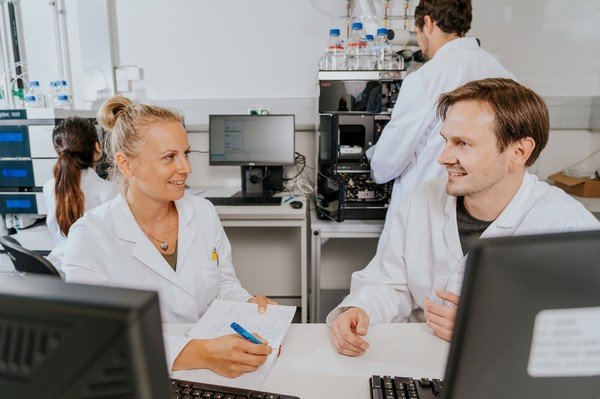
Tool-Development for Bio/Process Analytics
Protein glycosylation is a universal feature that can be found in all domains of life, including viruses. The covalent attachment of glycans to the protein backbone is a complex and dynamic co/post-translational process that is non-template-driven and that involves the tight interplay of several proteins, including enzymes, lectins and transporters. The glycosylation machinery of an organism is shaped by the genomic background, but it also depends on the developmental stage, the metabolic state, as well as internal and external interactions, e.g., pathogenic conditions. The glycosylation machinery is therefore species-specific and within a species it is also tissue- or cell-specific. This results in an enormous structural diversity and complexity that glycans can exhibit – a diversity and complexity that exceeds that of other post-translational modifications such as phosphorylation by far. There are different forms of protein glycosylation, each defined by the following characteristics: 1) glycan composition (or glycan sequence), i.e., the number and type of monosaccharides the glycan is composed of (including structural isomers); 2) glycan connectivity, i.e., the different possible glycosidic bonds (linkages) that can be established between monosaccharides (resulting in linear but also branched glycan structures); 3) glycan configuration, i.e., the anomericity of the linkages; and 4) the glycosylation sites, i.e., the amino acid(s) the glycan is attached to. The most common forms of protein glycosylation are the N-glycosylation and the mucin-type O-glycosylation. For each form of glycosylation various glycan structures, still sharing common features but that differing in composition, connectivity and configuration, can be attached to a glycosylation site – a characteristic termed microheterogeneity. Additionally, also the occupancy of potential glycosylation sites can vary within a protein – a characteristic termed macroheterogeneity. Glycans are essential features of many proteins, where they can influence or modulate several characteristics and functions of the protein, including for instance the correct folding of the protein or the binding specificity to a ligand. Glycans are therefore known or assumed to be involved in numerous physiological but also pathophysiological processes. By providing structure-function relationships, the qualitative and quantitative analysis of glycans and their carrier proteins can help to understand the implications of glycans during these processes. Such knowledge, in turn, can be used for instance to understand and monitor the onset and progression of a disease, or to develop or improve therapeutic glycoproteins (biopharmaceuticals).
Given the importance but also challenges of protein glycosylation, there is a dramatic increase in the demand for sophisticated analytical tools in (glyco)biology, respectively (glyco)biotechnology. Besides mass spectrometry- and liquid chromatography-based analysis techniques, electrokinetic separation techniques have become the core technologies in glycan analytics. Despite substantial progress in sample preparation, instrumentation, as well as software-assisted data-analysis and knowledge transfer, protein glycosylation analysis is still demanding and offers plenty of opportunities for improvement and optimization. To meet these needs we are developing strategies (methods, software & databases) and workflows for automated, sensitive, high-throughput, high-performance and high-resolution bio/process analytics.

Our group has developed, optimized, and validated a set of high-performance tools for the analysis of released glycans and free oligosaccharide (glycomics approach) as well as for the analysis of glycopeptides (glycoproteomics approach). The glycomics approaches comprise orthogonal electrophoresis-, chromatography- and/or mass spectrometry-based techniques (xCGE-LIF, HILIC-FLR, PGC-LC-ESI-MS/MS, RP-LC-ESI-MS/MS).
While the glycoproteomics approaches comprise mass spectrometry-based and chromatography-coupled-to-mass spectrometry-based techniques (MALDI-TOF/TOF-MS/MS and nanoRP-LC-ESI-MSn).
This also includes dedicated software-tools (glyXtoolCE for xCGE-LIF analyses of glycans and oligosaccharides, and glyXtoolMS for LC-MS/MS analyses of glycopeptides).
glyXtoolCE has been further adapted for analysis of nucleotides and nucleotide sugars from enzymatic cascade reactions measured by multiplexed capillary electrophoresis (MP-CE), where subsequent data analysis of 96 parallel measurements still provides a serious bottleneck.

